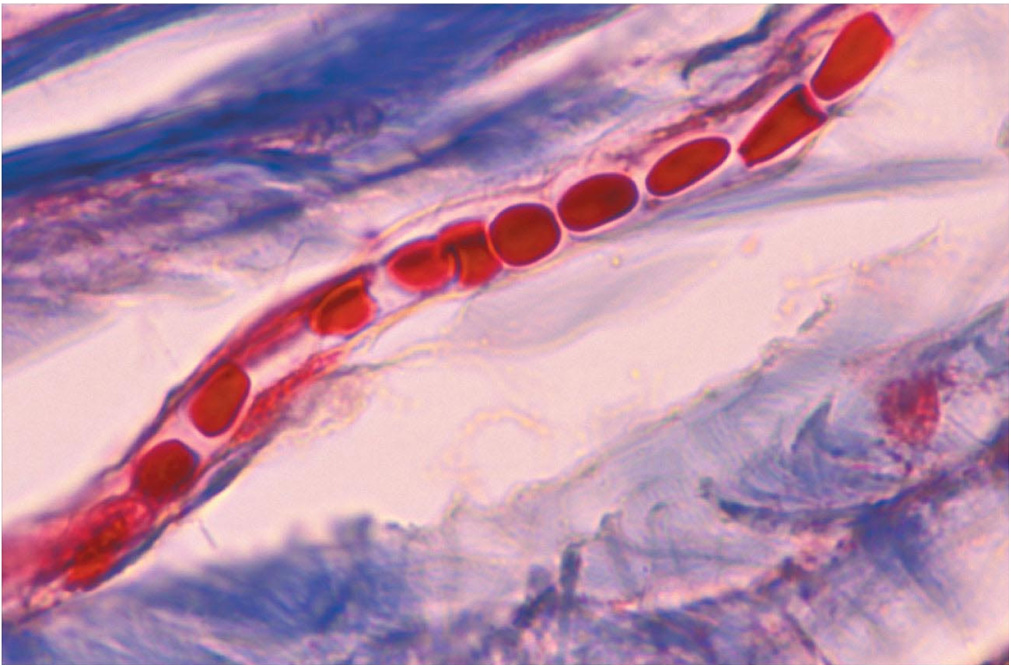A step forward in transfusion medicine may involve a new application of microfluidics technology to evaluate the quality of stored red blood cells (RBC) and to improve RBC abnormality screening efficiency.
The RBC (~8 µm in diameter) are the vehicle for oxygen delivery and they must traverse through a fine network of capillaries (~2.5 µm) and splenic inter-endothelial clefts (0.5-1.0 µm) to reach their destination at various tissues and organs. In other words, RBC have to change shape extensively, or deform, in order to squeeze through small spaces and to successfully deliver their cargo. Those RBCs that are unable to deform cannot move through the network effectively and are removed from the “traffic” flow. Thus, normal RBC deformability is central to circulatory efficiency and biological viability.
Stored RBCs age and accumulate oxidative damage over time, causing decreased deformability. Traditional approaches for measuring RBC deformability (eg. ektacytometry, micropore transit analyses, and micropipette aspiration) are time-consuming, require expensive instrumentation, are unable to differentiate RBC sub-populations, and are not adaptable to high-throughput demand in the clinic or blood bank. Drs. Mark D. Scott, a CBR researcher, and Hongshen Ma from UBC Mechanical Engineering introduced a rapid, low-cost alternative – a microfluidic device – for evaluating RBC deformability in blood products – published in American Journal of Hematology.
The microfluidic device focuses individual RBCs at the mouth of a minute funnel where the small pore opening of 2.0 µm simulates the capillary diameter. The pressure required to eject the RBC from the mouth of the funnel can be used to calculate the tension force at the RBC membrane, which is an indirect measure of RBC deformability. The application of microfluidic analysis to RBC deformability allows differentiation between RBC populations of varying degree of oxidative damage at a higher sensitivity than the routine hematology analyzer and RBC morphological assessment.
This device may also have potential application in screening individuals for undiagnosed RBC abnormalities and hemoglobinopathies, such as sickle-cell disease or thalassemia, as RBCs under these conditions also show increased membrane rigidity. Ongoing investigations will aim to determine whether the microfluidic device could further discriminate between specific hematological abnormalities.
The collaboration was supported by the Canada Foundation for Innovation and the Michael Smith Foundation for Heath Research.
Contributed by Deb Chen, PhD Candidate at Devine lab, CBR




